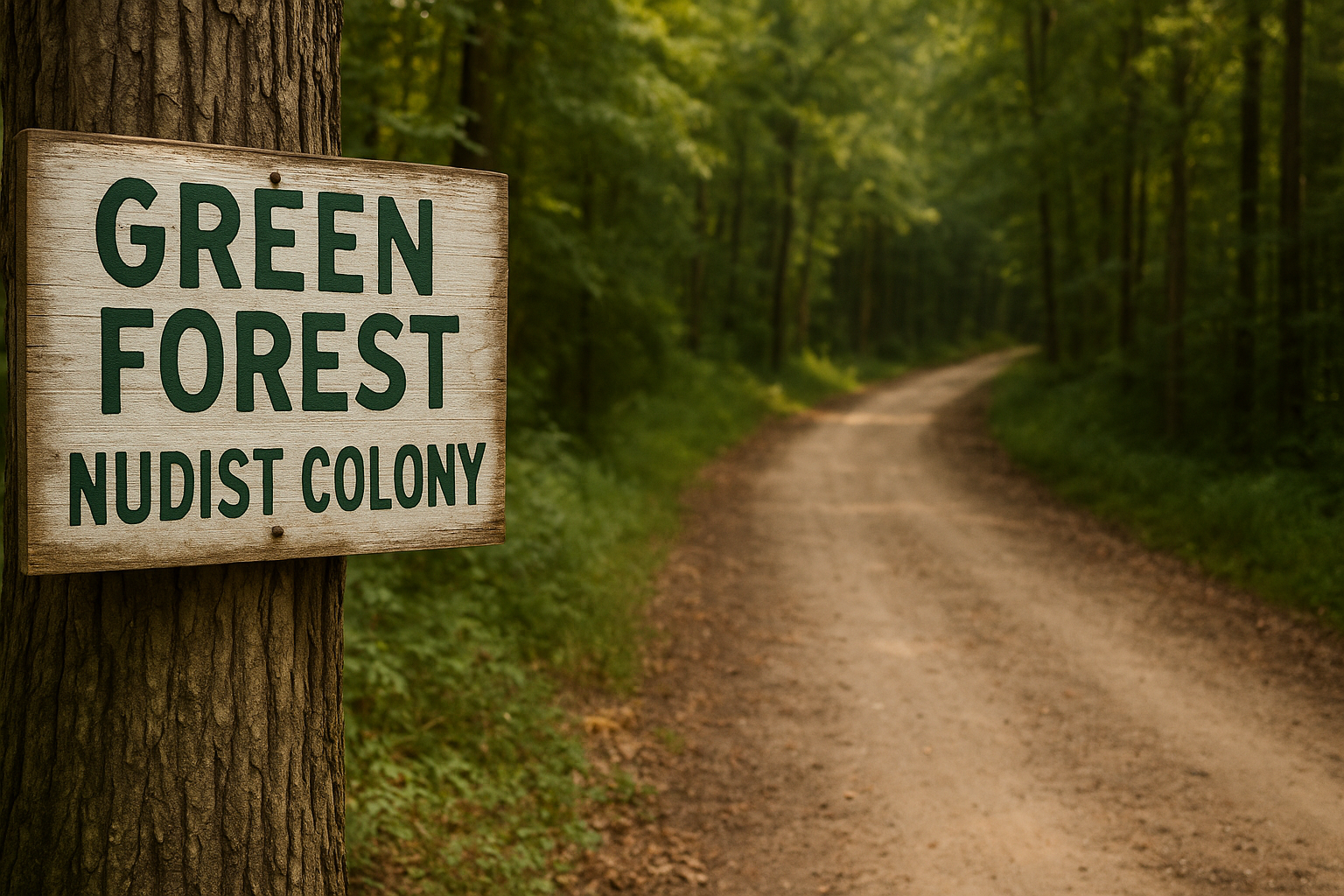The Nudist Colony Murder That Shaped Reston’s Pre-History
Setting the Scene: Pender, Virginia—Before There Was “Reston”
Long before sparkling lakes and Brutalist plazas defined modern Reston real estate, this slice of Fairfax County was known as Pender—a woodland crossroads where oak, hickory, and deep-green pine blocked out the horizon. In 1949, there were barely a dozen homes scattered along a rutted dirt stretch called Lawyers Road. Today that same corridor leads you to St. John Neumann Catholic Church at 11900 Lawyers Rd, but back then the parish hadn’t even broken ground. South Reston was still wild, and one of its quirkiest enclaves was a private retreat officially advertised as the Green Forest Nudist Colony—sometimes simply “Green Forest” to locals.
Caveat: Much of Green Forest’s everyday life is documented only in local memoirs and scattered newspaper blurbs; zoning files were few, so day-to-day colony routines remain anecdotal.
The Green Forest Nudist Colony: Fairfax’s Short-Lived Social Experiment
Post-Depression America saw dozens of “health camps” sprout in rural corners, promising sunshine, open air, and (yes) clothing-optional recreation. Green Forest followed that formula: a cluster of rustic cabins, a communal lodge, and a sign nailed to a tree at the lane’s entrance—just out of view from passing motorists on Lawyers Road. Membership required a modest fee and an adventurous spirit; press clippings describe weekend cookouts and “sunbathing circles,” but little hard data survives. By early ’49, however, the club’s good-time reputation would be forever eclipsed by a shocking crime.
February 24 1949: Charles Holober’s Deadly Detour
Charles Francis Holober, a 37-year-old D.C. resident and Green Forest member, convinced his estranged wife Frances to drive with him—and their eight-month-old daughter June—out to the lodge. Holober later claimed he merely wanted to “show off” the new clubhouse. Sometime after arrival, he steered their Ford off the single-track lane, only to sink axle-deep in winter mud. Tensions flared. According to court records, Charles beat Frances, then shot her twice—once in the head, once in the heart. He then committed the crime that Fairfax detectives would later call “unthinkable”: he placed baby June in the same shallow grave and covered her alive with soil.
Holober slept the night in the stranded car, hitchhiked back to D.C. in the morning, and roped his brother-in-law and a friend into a return trip under the guise of pulling out the vehicle. When Frances and the baby were nowhere in sight, Fairfax County Police were finally alerted.
A Community Mobilizes: Boy Scouts, Detectives, and a Grim Discovery
More than 30 officers and volunteers—including local Boy Scout Troop 796—fanned out across the pine woods. Near dusk, a detective’s boot sank into suspiciously soft earth behind the lodge. Minutes later, searchers unearthed Frances and June just 200 yards from the mud-bound sedan. Fairfax papers exploded with headlines; Washington columnists derided Green Forest as a “sin-camp in the trees.” Charles Holober, confronted with evidence, confessed he’d plotted the murders for three weeks but hadn’t planned on the car getting stuck.
The Trial: Insanity, Death Penalty, and an Overturned Verdict
The January 1950 trial was front-page news from Fairfax to Richmond. Jurors deliberated just four hours before sentencing Holober to die in Virginia’s electric chair. Defense counsel appealed, arguing jurors disregarded psychiatric testimony. In Holober v. Commonwealth, the Virginia Supreme Court overturned the conviction on procedural grounds and remanded Holober for further psychiatric evaluation. He was recommitted to Western State Mental Hospital in Marion, Virginia, where records list him as criminally insane.
What Happened to Green Forest?
The nudist colony limped on for a few seasons, but membership evaporated. By the early 1960s, the cabins were gone—bulldozed or reclaimed by vines. Oral histories place the camp’s entrance near today’s intersection of Lawyers Road and Blue Spruce Road. A few local bloggers (e.g., “Restonian”) claim remnants of stone footings linger deep in the woods; these reports are anecdotal, so hikers should temper expectations.
South Reston Today: From Dirt Roads to Lakes and Trails
Modern South Reston is a patchwork of leafy neighborhoods: Hunters Woods, Fox Mill Estates, and lakeside clusters along Lake Thoreau and Lake Audubon. What was once Pender’s wilderness is now a 6-minute drive to Reston Town Center and a 10-minute Metroway ride to Wiehle-Reston East Metro. Yet step down a side trail off Lawyers Road and thick forests still whisper of earlier eras.
Looking to explore the area?—Check trailheads at Walker Nature Center and be mindful of private property lines when hunting for historical landmarks.
Local Lore, Rumors, and “Bunny Man” Crossovers
Some online forums lump the Green Forest story into Fairfax’s legendary “Bunny Man” bridge mythos—another tale of gruesome happenings in nearby Clifton. There’s no archival evidence linking the two beyond popular imagination. When referencing these rumors, historians urge skepticism and a critical eye toward source citations.
Why the Green Forest Murder Still Matters
Community Identity: Knowing that Reston’s picture-perfect streets overlay a deeper, sometimes darker history can foster a stronger sense of place.
Planning & Preservation: Fairfax County’s growth plan balances new development with woodland buffers—echoes of lessons learned when isolated sites invited mischief.
Local Conversation Starter: Next time someone calls Reston “boring,” drop the phrase “nudist colony murder” and watch the eyebrows rise.
Frequently Asked Questions
| Question | Quick Answer |
|---|---|
| Exactly where was Green Forest? | Oral histories place it behind today’s St. John Neumann Church campus off Lawyers Road. No marked ruins remain. |
| Is the area safe to visit? | Absolutely. It’s now suburban streets and HOA-maintained woodland. Stick to public trails. |
| Did Green Forest re-open? | No. The colony dissolved by the early 1960s; any “revival” stories are unverified. |
| Can I tour the murder site? | There’s nothing official to see; private property laws apply. |
Final Thoughts
From Pender’s lonely pines to Reston’s master-planned lakes, Fairfax County has always reinvented itself. The Reston Nudist Colony Murder remains a haunting chapter—equal parts tragedy and cautionary tale—but it also reminds us that every cul-de-sac has a pre-history worth uncovering.



